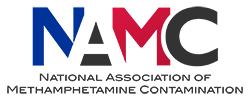Adverse Health Effects Associated with Living in a Former Methamphetamine Drug Laboratory — Victoria, Australia, 2015
Jackie Wright
ABSTRACT
The manufacture of methamphetamine in clandestine drug laboratories occurs in various locations, including residential houses and apartments. Unlike the controlled manufacture of chemicals and drugs, clandestine manufacture results in the uncontrolled storage, use, generation, and disposal of a wide range of chemicals and the deposit of methamphetamine drug residues on indoor surfaces (1). These residues have been found at high levels on porous and nonporous surfaces and have been shown to persist for months to years (1). Persons exposed to these environments often have poorly defined exposures and health effects. It is commonly assumed that these levels of exposure are low compared with those related to illicit drug use or therapeutic use of amphetamine-based drugs for managing behavioral issues such as attention deficit hyperactivity disorder (2). In 2015, a family that was unknowingly exposed to methamphetamine residues in a house in Australia was found to have adverse health effects and elevated methamphetamine levels in hair samples, highlighting the potential for public health risks for persons who might live in methamphetamine contaminated dwellings. This case study highlights the importance of the identification and effective decontamination of former clandestine drug laboratories
Full document here: http://namc.org.au/wp-content/uploads/2020/10/Wright-et-al-2017.pdf
